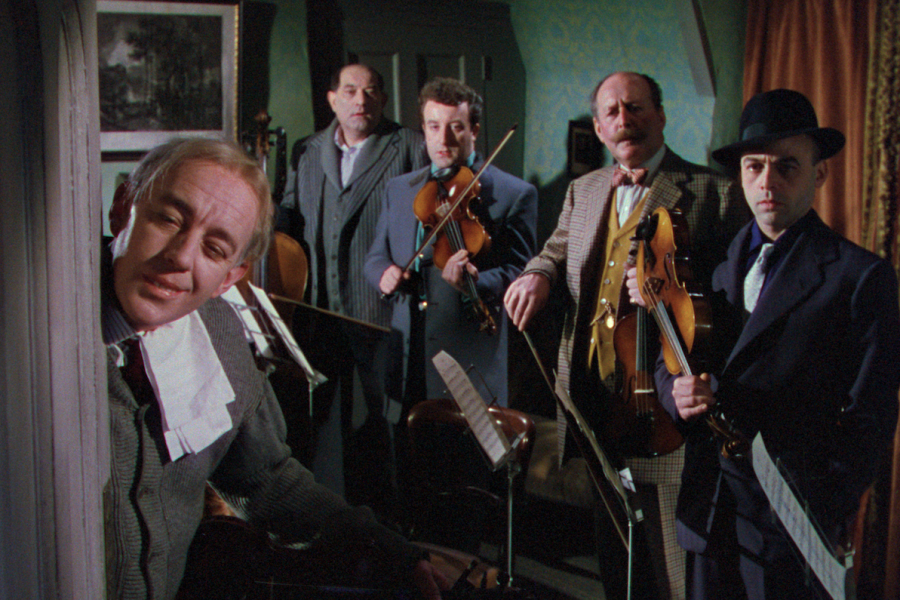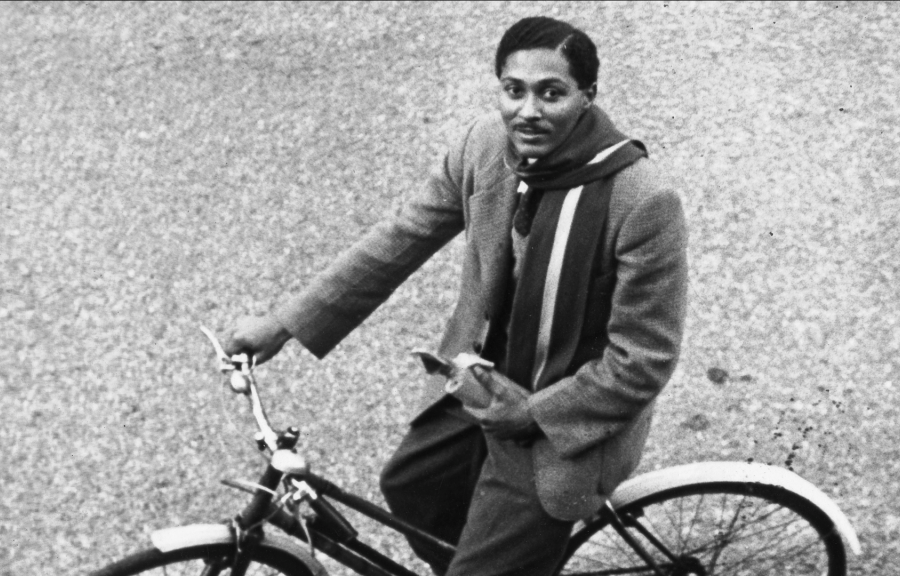An inspired and intimate portrait of a place and its people, Hale County This Morning, This Evening looks at the lives of Daniel Collins and Quincy Bryant, two young African American men from rural Hale County, Alabama, over the course of five years. Collins attends college in search of opportunity, while Bryant becomes a father to an energetic son.
Described by the film critic of the New York Times as ‘pure cinematic poetry’, the directorial debut of award-winning photographer and director RaMell Ross offers a refreshingly direct approach to documentary, in an open-ended form that privileges the patiently observed interstices of the protagonists’ lives.
The film was introduced by Caroline Deeds, a documentary filmmaker whose work is inspired by stories of marginalised voices and people who refuse to lose sight of their dreams. With a background in fine art, Caroline has also made films about artists including Turner Prize winners Jeremy Deller and Chris Ofili. She teaches in the Film and Television department at Falmouth University.
CAROLINE DEEDS: INTRODUCTION
I am a filmmaker, artist, and lecturer at Falmouth University, where I teach in the School of Film and Television.
I first heard about Hale County This Morning, This Evening when I was at the Sheffield International Documentary Film Festival in June 2018. There was a buzz about it; the film had sold out almost immediately and I couldn’t get a ticket. I waited six months for the next opportunity to see it when it played at the ICA in London, where I had the privilege to hear RaMell Ross speak about his work and his process. It was exciting to hear him speak. He was erudite, nuanced and a captivating speaker.
Hale County, This Morning, This Evening went on to win the Sundance Special Jury Award for Creative Vision in 2018 and an Academy Award nomination for Best Documentary in 2019.
The film loosely follows two young men, Daniel Collins and Quincy Bryant, as they move through their final years of adolescence and into adulthood. Their lives are utterly ordinary. Collins and Bryant go to school, hang out with friends, start families, watch TV, go to work. They dream of their futures and face hardships and tragedies.
RaMell Ross is a photographer by training. He was a basketball player at Georgetown University, and he dreamed of playing in the NBA. His dreams were dashed after an injury he sustained, and he enrolled on a course in the history of photography and a black and white darkroom class.
In 2009 he moved to Hale County to teach basketball and community classes.
‘The impetus for picking up the camera and beginning to film the two main protagonists, Daniel and Quincy, came about from what I felt almost as a sadness – a sadness about the generalized inability to see communities like this one from the inside. And in the same way, where do these communities see themselves represented and celebrated in the world?’
RaMell Ross has taken Hale County as a subject and muse, and he is not the first. Hale County has a mythic place in Southern American Literature and Art. Hale County was the location for James Agee’s seminal book Let Us Now Praise Famous Men, which features Walker Evans’s photos of three white tenant farmers during the great depression, and William Christenbury photographed and painted Hale County’s rural buildings and landscape, producing an iconic and important body of work on a singular place.
Time.
Time is an important theme in this film. Ross is constantly drawing our attention to time and the passage of time. He speeds up time in the middle of a shot or allows a scene to play out longer than we are used to seeing. There is a beautiful scene where a young child runs backwards and forwards in the frame. In our ‘Instagram-amble’ world, this would be a short 20 second viewing. But the shot is held for perhaps three or four minutes while the child runs back and forth. And something happens. We begin to see his development in resilience and notice his unfaltering sturdiness, we begin to appreciate his vitality and curiosity and the pleasure of falling into rhythm with him in his exploration of his space and time. In this act of holding shots, we are given a rare privilege to see the lives of these two young men and their families not as signifiers for an issue or fulfilling racist fantasies, but as themselves and expressions of their experiences.
RaMell writes:
‘To be Black is the greatest fiction of my life. Yet I am still bound by its myths. I can’t help but think about the myth’s childhood and its backyard of the South. How the myth of Blackness aged into fact and grew into laws. How it evolved from there to become tacit and join the secret order of things. How it became the dark matter of the American imagination.’
Slowness doesn’t always translate well in cinema, but I found myself holding my breath on long held shots of acres and acres of cotton fields in a drive-by developing shot. The camera looks and looks and doesn’t look away. The rural landscape has historical baggage we are forced to contend with.
Ross has an awareness of how we portray stereotypes in film. Influenced by Toni Morrison’s ‘Centralizing the Black gaze’ philosophy, he invests in the practice to resist the playing out of narratives where the default reader is white. The white gaze restricts Black expression and resists expressions of truth because of an awareness of oppressive readings of truth. Toni Morrison describes it as ‘the little white man sitting on your shoulder, checking out everything you do or say’ and there is often a pressure to take that reader’s view into account.
‘The Black belt is the home of our social construction. It is from here that we are everything America has permitted us to be. There is no better place for innuendo, for subtlety, for inference; no better setting for presenting Black folks in ways that are simultaneously basic and complex, historic, and contemporary.’
Time: Being There
Time also concerns the physical time and presence you will give to something or someone. Film production budgets can be measured by the amount of time you are able to spend in a place and budgets often prohibit significant time spent in developing a relationship or connection to the story. RaMell poses the question: ‘How much time is someone willing and able to look and be present?’
RaMell was invested in being there. He spent time there and became family. The film was secondary. He had gone to Hale County to teach. Relationships grew and the film developed from there.
Near the beginning of the film a line of text on screen reads: ‘How do we not frame someone?’ In this film we are opting out of narrative’s built-in tyranny.
RaMell says he’s interested in the Black banal, in opposition to the notion of entertainment. When it comes to stories of Black lives, there is an urgency to deal with trauma, and in that focus, everything else is lost.
‘No-one looks for long enough for new meaning to emerge.’
In watching this film, we are using time; to learn to re-see. He gives us the opportunity to break down conceptions of what we think we know and what we have been conditioned to see.
One enduring memory of my time in foundation class at art school was when we were asked to draw objects that we were familiar with. I chose a spoon.
We had a long stick tied to our wrist and on the end of that a piece of charcoal. We stood back three feet from our drawing on the wall. Most of the time when you draw you are drawing from memory or muscle memory of what you think you see or what you already know about what’s in front of you. Drawing with that long stick I had the opportunity to look. My eye and my entire body could re-see the spoon as it was, in that moment in time. The clumsy effort of holding the stick with the charcoal on the end translated into new mark making.
I’m often embarrassed by my shooting ratio, and sheepishly deliver 80 or 100 hours to my poor editor to cut into an hour-long film. I have been in awe of the ability of filmmakers such as Kim Longinotto, who are able to keep their ratios to a modest 10:1.
RaMell shot roughly 1,300 hours for a 76-minute film. There were several editors who contributed to the editing of the film.
‘There was one stipulation for every image included in the film before the final edit process: it had to lean heavily toward exceptional or unexpected beauty. Which we defined in many ways – conceptually, compositionally, and so on. The entire endeavour of the film might be thought of as an attempt to not-frame a community and a people: to reflect a history of sinister framing while offering something else that still somehow touches the interiority of the viewer.’
The film is breathtakingly beautiful and mesmerising, and it makes me happy that it exists.
Delivered on Friday 4 February, 2022.


